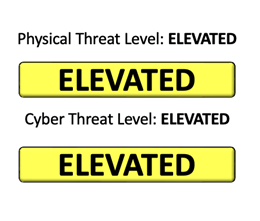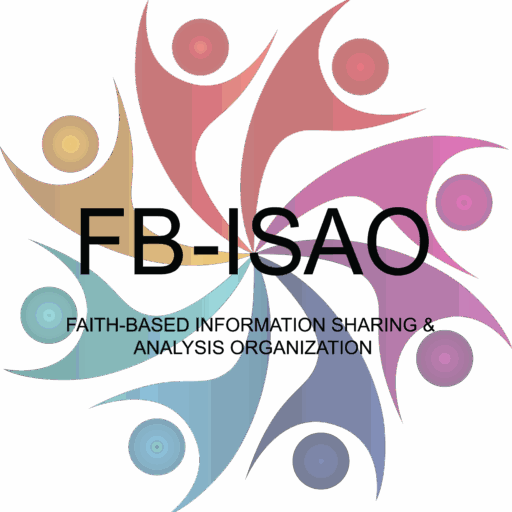Faith-Based Security Headlines
These updates are shared to help raise the situational awareness of Faith-Based organizations to best defend against and mitigate the impacts from all-hazards threats including physical security, cybersecurity, and natural disasters.
CISA Braces for Major Workforce Cuts Amid Security Fears
CISA is facing potential massive workforce cuts, with up to one-third (approximately 1,300 employees) possibly affected. DHS has given employees until midnight on Monday to decide whether to stay, accept a deferred resignation, take early retirement, or accept a separation payout. This abrupt move has created significant uncertainty and fear among staff.
The atmosphere at CISA is described as “tumultuous” and “unnerving,” with many employees considering private-sector jobs due to the instability. The planned cuts are broader than previous ones, which had mostly targeted election security and misinformation teams. Now, critical mission divisions risk becoming severely understaffed, potentially weakening the federal government’s ability to protect infrastructure sectors like energy, water, and transportation.
Though CISA is offering support options during this transition, cybersecurity experts warn that these cuts could leave U.S. critical infrastructure increasingly vulnerable to cyberattacks. It remains unclear how many employees have already accepted the resignation or payout offers.
Analyst Comments: Cutting a third of CISA’s workforce is risky as they are essential in protecting the nation’s most critical systems. With cyber threats growing in both scale and complexity, undermining the government’s primary cybersecurity agency could have serious and lasting national security repercussions. FB-ISAO will continue to monitor and as updates come we will provide updates in across our reporting mechanisms.
With any potential degradation of the government’s capabilities, it amplifies the importance of collaboration and proactive sharing in communities like FB-ISAO. Our membership are very active in sharing threats and incidents in our Slack workspace. For those interested in learning more about the benefits of joining our community, please see our membership page.
CISA Introduction to PACE Planning for the Emergency Communications Ecosystem
As part of Emergency Communications Month CISA is hosting an educational webinar on Wednesday, April 23, 2025 at 1:00 – 2:00 p.m. ET On Primary, Alternate, Contingency, and Emergency (PACE) Planning.
PACE Planninghelps to promote and maintain operability, interoperability, and continuity of emergency communications. PACE Planning supports the Information Communications Technology (ICT) Framework and promotes the three critical components of cyber resilience—risk mitigation, incident recovery, and response.
Maintaining reliable backup emergency communications capabilities is essential for public safety and critical infrastructure sectors, during day-to-day operations or when communications are disrupted or degraded. Developing, implementing, and exercising a PACE Plan enhances an organization’s ability to continue to communicate during emergency situations. A PACE Plan also helps organizations establish predictable and redundant communications capabilities in changing operational environments.
This webinar will provide PACE Planning best practices and include key insights to support your planning efforts. The webinar will provide attendees with an understanding about:
- PACE Planning methods;
- Key initiation triggers;
- An understanding of what to do when primary communications fail; and
- Ways that agencies can work to develop a multi-agency PACE Plan.
Register here to receive an invitation and link to join the webinar.
Recent hospital violence fuels effort to create workplace protections
Recent incidents of workplace violence in hospitals and clinics have intensified efforts to establish federal protections for healthcare workers. Despite healthcare professionals consistently ranking among the most likely to experience workplace threats or assaults, there is currently no nationwide mandate requiring health systems to conduct hazard assessments, provide safety training, or inform employees of their rights.
In response, Senator Tammy Baldwin (D-Wis.) and Representative Joe Courtney (D-Conn.) have introduced legislation aimed at requiring healthcare employers to develop and implement workplace violence prevention plans. These standards would apply to over 300,000 establishments, including hospitals, home health agencies, emergency medical teams, and behavioral care facilities, with an estimated annual compliance cost of $1.22 billion.
This legislative push follows several high-profile violent incidents in medical settings and reflects heightened public and legislative concern about the increasing spillover of societal violence into healthcare environments. Many hospitals are already investing in physical security upgrades, and over 60% reportedly have violence prevention plans in place, according to the American Hospital Association.
Analyst Comments: Violence against healthcare workers is no longer a series of isolated incidents it’s a widespread, systemic issue. Establishing a national mandate would create consistent safeguards and ensure a safer working environment across all healthcare settings. In order to protect healthcare workers it is important to develop and implement workplace violence prevention plans, have training programs, improve physical security, and strengthen the reporting and response systems.
Report reveals escalation of violence against Christians in the Holy Land
The Rossing Center, an interfaith organization in Jerusalem, released a 2024 report documenting 111 cases of harassment and violence against Christians in Israel and East Jerusalem. These include 47 physical assaults, mostly spitting, often directed at visibly religious individuals like priests and nuns. There were also 35 cases of vandalism and desecration targeting churches and monasteries, including graffiti, arson, and defacement of Christian symbols.
Key findings and concerns:
- The violence is largely attributed to young ultra-Orthodox and national-religious Jewish men.
- Incidents are underreported due to fear and distrust in authorities.
- Christian leaders have faced demands to remove crosses from public spaces.
- Nearly 48% of young Christians under 30 are considering emigration due to discrimination and violence.
- Christians feel increasingly marginalized, especially in East Jerusalem, where settlement policies are expanding.
- There is also concern about inequitable taxation affecting Christian institutions.
- In northern Israel, organized crime has disproportionately impacted Christian communities due to lack of state protection.
The report emphasizes the need for education to combat stereotypes and promote religious coexistence. Without strong measures, it warns of a significant decline in the Christian presence in the Holy Land, with serious consequences for interfaith relations globally.
Analyst Comments: The rise in physical assaults, especially the repeated spitting on clergy members, reflects a broader culture of intolerance and hostility. Such attacks often start as subtle forms of discrimination and gradually escalate into more violent acts, indicating a deeper issue within certain segments of Israeli society, particularly among the ultra-Orthodox and nationalist groups. In order to protect Christian communities, there should be stronger law enforcement, educational programs, protection of religious sites, advocacy for religious freedom, and support for Christian community. In our most recent Threat Level Statement, published on 31 March 2025 we speak to the general sense of increased intolerance across society, which is impacting threats to faith-based communities across the board.
Get the Daily Awareness Post Delivered to your Email!
More Faith-Based Stories
Suspect sought after 2 fires set at historic Detroit church
Vandalism at St. Theresa Church in South Lake Tahoe treated as hate crime
Volunteer at Roseville church charged with sex assault of 4 young children
Top Christian nationalist podcasters spread claims that Jews ‘drain blood’ from children
CAIR Condemns ICE Abduction of Another Columbia U. Student Over Anti-Genocide Activism
Mennonite Church USA v. U.S. Department of Homeland Security (U.S. District Court for D.C., 2025)
Religious teacher charged in series of alleged sexual assaults in Ontario
Arrest made at UnitedHealthcare headquarters after reports of an intruder
China accuses US of launching ‘advanced’ cyber attacks, names alleged NSA agents
How the Federal Government Is Undermining Election Security
HHS Systems Are in Danger of Collapsing, Workers Say
Federal funding freeze halts key infrastructure projects in tribal communities
Data Breach at Planned Parenthood Lab Partner Exposes Info of 1.6M
Sharing Is (Not) Caring: How Shared Credentials Open the Door to Breaches
Seemingly urgent security messages could lead to tech support scams
More Security-focused Content






